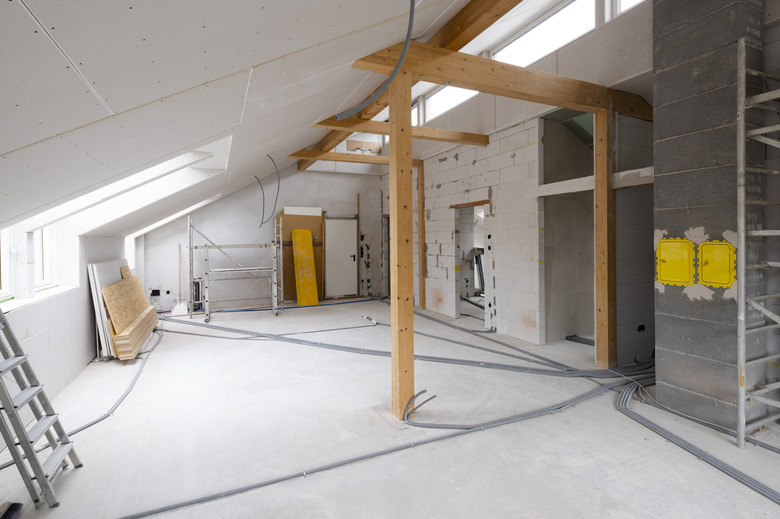The Cost To Frame And Drywall
Drywall is the No. 1 wall covering in North America, and it goes hand in hand with framing. When estimating costs for a building project, such as a partition wall, a room addition, or a new building, it makes sense to consider them together, but it isn't always easy to nail down an accurate figure.
Much depends on the complexity of the project. It costs more, for example, to build a curved wall or one with one or more door and window openings than it does to build a flat wall, partly because you might need more materials and partly because more labor is involved. Add to that regional differences in materials and labor costs, and you can see why you might get different numbers when you consult various websites. In the end, you'll probably need a real-world estimate from the contractor who's going to do the work (assuming you don't do it yourself), but it's possible to get a general ballpark figure to help with budget planning.
Here's what you need to know about the cost to frame and drywall.
Framing and Drywall Estimates
Framing and Drywall Estimates
Drawing on data from HomeAdvisor and Angi, Bankrate puts the cost of framing an interior wall in a range from $7 to $16 per square foot, but when you add all the extras, including drywall, electrical outlets, openings for doors and windows, and paint, the cost balloons to $20 to $30 per linear foot. Citing yet another source, Thumbtack, Bankrate sets the cost for framing and drywalling an interior wall in a range from $2,500 to $6,100.
The home improvement site Porch publishes numbers similar to these (they also come from HomeAdvisor) and estimates the average cost for framing a 300-square-foot room to be from $993 to $1,614. That doesn't include drywall. If you're looking to frame an entire house, you're looking at a range between $15,000 and $30,000, according to MySitePlan. Again, that doesn't include drywall.
Materials Costs for a Flat Wall
Materials Costs for a Flat Wall
To get an idea of the materials costs for a project, it helps to work out what they would be for a single 10-foot-long wall that is 8 feet high. The 2x4 lumber needed for the project includes one 10-foot bottom plate and two 10-foot top plates as well as eight to 10 8-foot studs. At 2022 Home Depot prices in one store location (prices vary by store):
- The wall plate lumber costs $4.98 each
- The studs are $3.87 each
- 2 pounds of wood screws are about $20
for a total of approximately $75. This is for a flat wall — no doors and no windows.
You'll need five sheets of 1/2-inch drywall to cover both sides of the wall, and at a unit cost of $12.98, that's about $70. You'll also need drywall joint compound, tape, and screws, so add another $43 (approximately).
Put the numbers together, and the minimum materials cost for an 8 x 10 flat wall is about $188. Adding electrical materials, insulation, and primer and paint means additional cost, as does using specialty drywall (such as moisture-resistant panels). Few walls are this simple; most require oversize lumber for headers and double studs for window and door openings, and some require special connectors, so $188 is a bare minimum materials cost.
Labor for Framing and Drywall
Labor for Framing and Drywall
If you DIY the wall, you can probably frame it in less than a day, install the drywall the next day, and spend portions of the next few days taping and mudding. If you hire a contractor, you'll pay an hourly rate between $75 and $100, but the job will proceed faster, and you may get by with a total of eight to 10 hours of labor. The simple wall would cost between $755 and $1,167 for labor and materials. Costs go up with the addition of doors and windows because they take time to frame in.
You can't simply multiply this bare-bones wall project by four to calculate the cost of framing and drywalling a 100-square-foot room because there are other factors involved with framing and drywalling multiple walls. For one thing, there's also the ceiling to think about. However, it puts you in the right ballpark, and it's pretty clear that you can save a lot by doing the work yourself.
